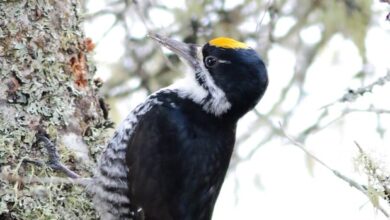Northern B.C. researchers want your help finding and collecting bear poop

Bears are known for their habit of pooping in the woods, but what about in the city? Researchers in Prince George, B.C., are seeking the public’s assistance in identifying and collecting bear scat to analyze and compare the health of urban bears to those outside the city.
Biologist Laura Graham, a professor at the College of New Caledonia, is leading a multi-year study to explore the physiological differences found in urban bears. The goal is to determine what factors are attracting bears to urban areas and ultimately find ways to manage the bear population and reduce conflicts with humans.
In 2024, the Conservation Officer Service (COS) in B.C. reported a decrease in the number of black bears killed, with 303 bears compared to 603 the previous year. Many bear deaths are attributed to bears seeking food, often found in garbage bins.
However, Graham points out that there are other factors at play. In a recent interview with CBC, she mentioned that factors such as forest fires and air quality could also influence bears’ decisions to enter urban areas.
Graham is not encouraging people to actively search for bear poop, but if they come across it, she is requesting their assistance in collecting samples. These samples will be analyzed for hormones related to stress and metabolism. If you spot suspected bear poop in your yard or a nearby park, you can take a photo and send it to 778-349-4813 or collect it in a plastic poop bag for submission.
To ensure the samples are viable for analysis, they need to be relatively fresh and accompanied by the time, date, and location of collection. Samples can be dropped off at the college, where there is a designated refrigerator for bear scat.
Identifying bear scat is relatively simple, according to the Fur-Bearers, an environmental advocacy group. The scat is typically large, dark, and can appear loose or tubular.
The research team is accepting photos and samples until late October, with the study findings expected to be available by spring 2026. By understanding the factors influencing urban bear behavior, researchers hope to develop strategies to mitigate conflicts and protect both bears and humans.




